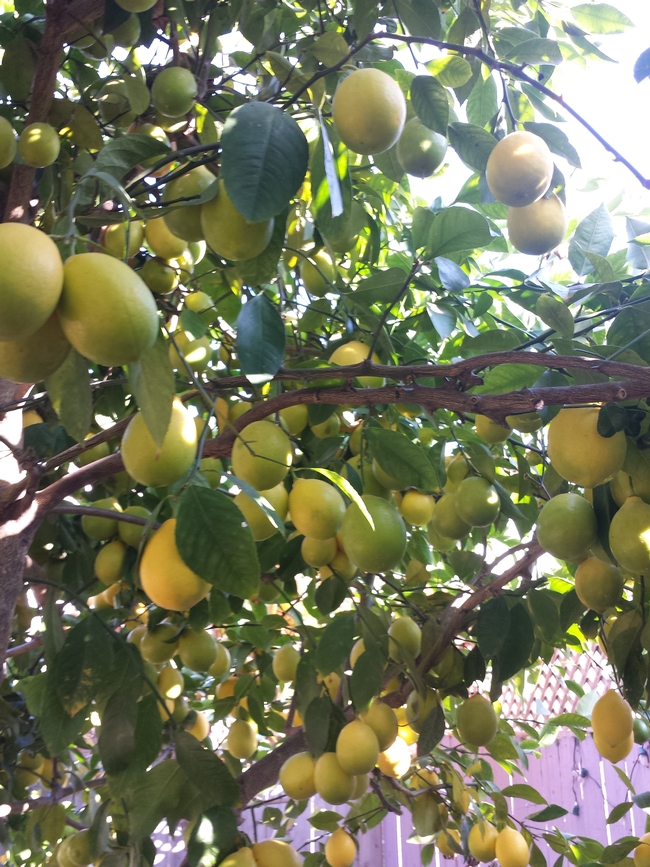I remember ending last month’s to-do list with a promise that December’s garden to-do list would be shorter. What was I thinking?
There is actually a lot to do in the garden in December. If you planned ahead and were industrious in late summer, you are probably harvesting Brussels sprouts, cabbages, broccoli, kohlrabi and kales. Harvest individual Brussels sprouts from the bottom, or cut off the entire stalk and store somewhere cold while you use them. We have two upright, full stalks of bright green Brussels sprouts resting in our cool pantry, and I pop off a potful of sprouts as needed.
Beets, carrots, scallions, radishes and lettuces of all varieties are easy to grow in fall and winter. Micro-greens and Asian greens also thrive in cool and even cold weather. It is easy to fill your salad bowl from the garden at this time of year.
When the weather gets really cold and my lettuce freezes, I have found that if I do not touch the leaves until they thaw, they will often be fine. Touching them damages fragile cells, which causes the leaves to deteriorate when they thaw in the morning sun.
Carrots and radishes can be sown now, as can English peas, sugar peas, sweet peas and spinach. Perhaps you are harvesting some of these crops now if you planted them in late summer. Pomegranates seemed to ripen a little early this year, but you might have a few of those left to pick, too. Complete your olive harvest if you haven’t already. University of California Extension has instructions for curing olives in several ways.
You can plant fava beans now. They are a popular cover crop in Napa Valley, preventing erosion during the winter rains. Plowed into the soil in spring, they contribute nitrogen and biomass, replenishing fertility.
However, if you grow fava beans for the table, wait to harvest them until the beans swell inside the fuzzy green pods. After shelling them, you can eat the beans raw or cooked, peeled or unpeeled. Italians enjoy young fava beans peeled and raw, with olive oil and salt for dipping, crusty bread and a glass of red wine. You can also let the pods mature on the plant and harvest the dry beans to use for soup.
If you plant radishes right now, you may have some fast-growing varieties ready by Christmas or New Year’s. Consider crisp red ‘Cherry Belles’ or long white daikon types. Smooth- or curly-leaf spinach varieties, chard, parsley, and sets of shallots and garlic can still go in.
Because a gardener’s work is never done, you will already find transplants at the nursery for spring harvests of broccoli, cabbage, cauliflower, lettuce and arugula. Shop for rhubarb and artichokes early; nurseries offer them on a first-come, first-served basis. When the supply runs out, you won’t see them again for a year.
Nurseries may still have a few bulbs for spring bloom. Their blossoms are lovely in the garden, but consider forcing bulbs for indoor color, too. Many bulbs are sold with directions for forcing. Some instructions may recommend chilling bulbs before planting outdoors. Follow the directions and enjoy the results.
Get out your floating row covers to extend the harvest of some crops as the temperature drops. You can also use this material to keep aphids and other insect pests off broccoli and cauliflower. If you have done your winter garden cleanup and eliminated piles of debris, lumber, pots and other hiding places for snails and slugs, you won’t find many pests. If you are still finding a lot of slugs, you might need to tidy up the garden a bit more.
December brings more gray days, but it is still possible to have lots of garden color in protected spots and in pots and baskets. If blue or purple flowers cheer you, then head for the pansies and violas. Violas in yellows and oranges make a wonderful contrast in sunny baskets.
Remember to stay off your garden soil when it is wet to avoid compacting it. If you expect to plant bare-root roses, fruit trees or vines this winter, try to get the planting holes dug before heavy rains begin. Lay plastic sheeting over the planting holes to prevent them from getting too wet to work.
Begin pruning your deciduous fruit, nut and shade trees now. Do not prune evergreen shrubs, roses or vines. Pruning evergreens stimulates new growth that could be vulnerable to a cold snap. Cover your compost pile when it rains so you do not drown your hard-working microbes. Bundle up and enjoy our Napa Valley winter. January’s to-do list will surely be shorter.
Napa County Master Gardeners welcome the public to visit their demonstration garden at Connolly Ranch on Thursday mornings, from 10:30 a.m. until noon, except the last Thursday of the month. Connolly Ranch is at 3141 Browns Valley Road at Thompson Avenue in Napa. Enter on Thompson Avenue.
Master Gardeners are volunteers who help the University of California reach the gardening public with home gardening information. Napa County Master Gardeners ( http://ucanr.org/ucmgnapa/) are available to answer gardening questions in person or by phone, Monday, Wednesday and Friday, 9 a.m. to Noon, at the U. C. Cooperative Extension office, 1710 Soscol Avenue, Suite 4, Napa, 707-253-4143, or from outside City of Napa toll-free at 877-279-3065. Or e-mail your garden questions by following the guidelines on our web site. Click on Napa, then on Have Garden Questions? Find us on Facebook under UC Master Gardeners of Napa County.
